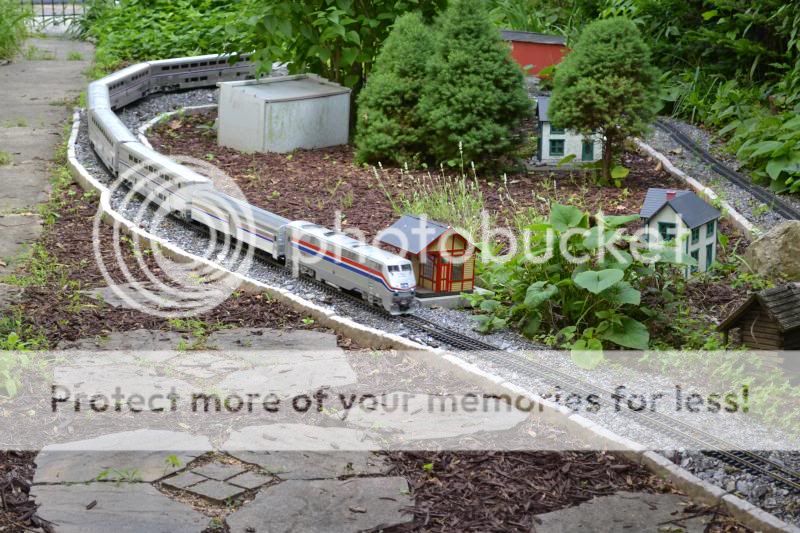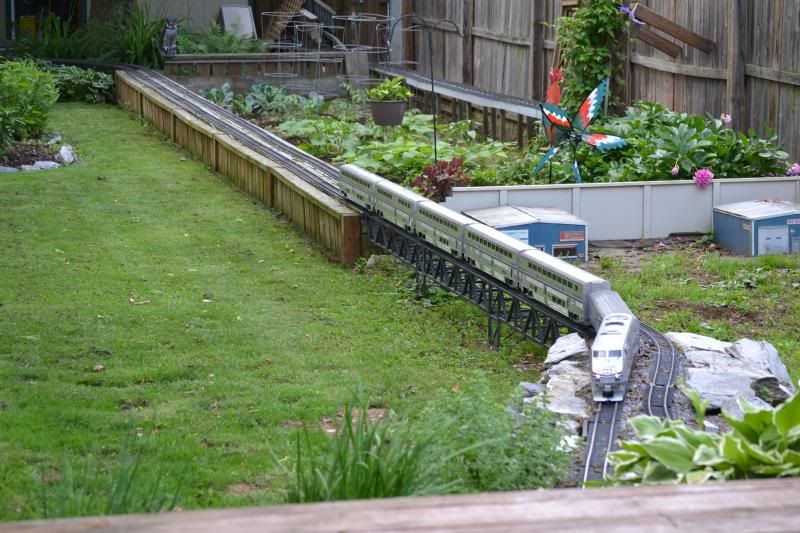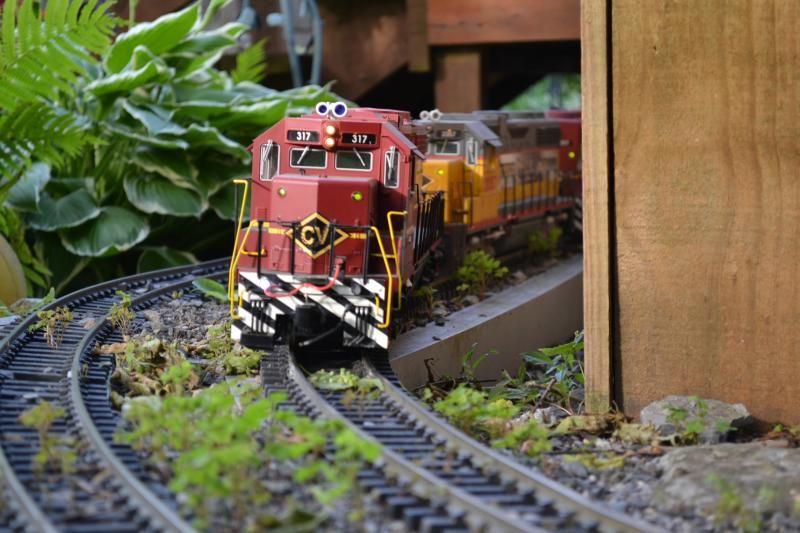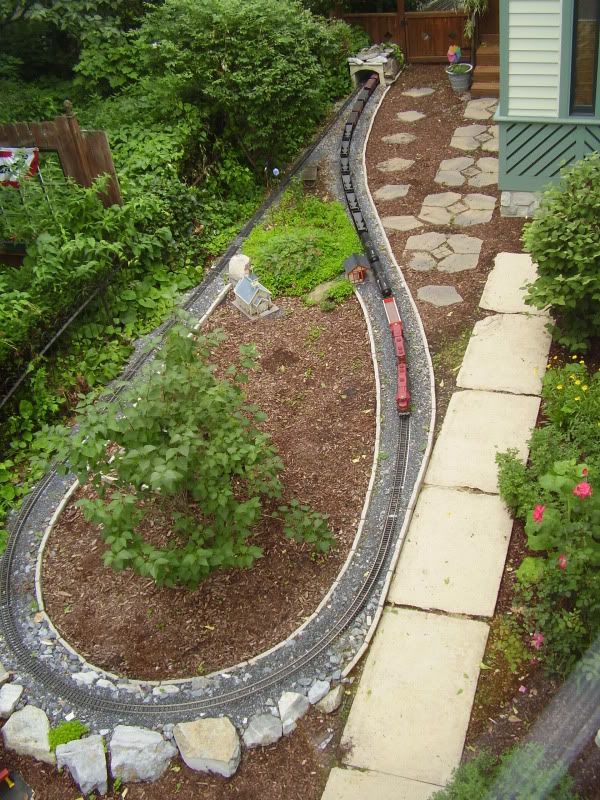Greg Elmassian said:
My only comment:
change to all body mounts except perhaps the intermodals.
Truck mount couplers exert twisting forces on the trucks, not good in any situation, horrible with a long train, because the forces become extreme.
Think about what the pulling forces are doing, they are trying to turn the trucks.
I have a 45 car train that goes up a 3.4% grade 60 foot long, levels out makes a hairpin turn 180 degrees and then goes down a 5.5% downgrade and turns at the bottom…
Could never do that with truck mounts…
Greg
With respect to truck vs. body mount couplers, I found similar experiences that Greg cited -except I found the USAT “intermodals” should have body mounts for the same reasons as other rolling stock.
Accordingly, I had been asked (and did) a Power Point / Keynote Presentation on body mounting couplers for the Bay Area Garden Railway Society (BAGRS) annual meeting in February.
Since the issue pointed out by Greg pertains to the detrimental “twisting forces on the trucks”, it may be helpful to see one of the illustration within that presentation - even if you don’t presently use body mount couplers.
Particularly, scroll to slide (page) 6 within the Presentation, to see illustration, title: “Why Use Body Mounts … Why Not Truck Mounts”
-Ted







